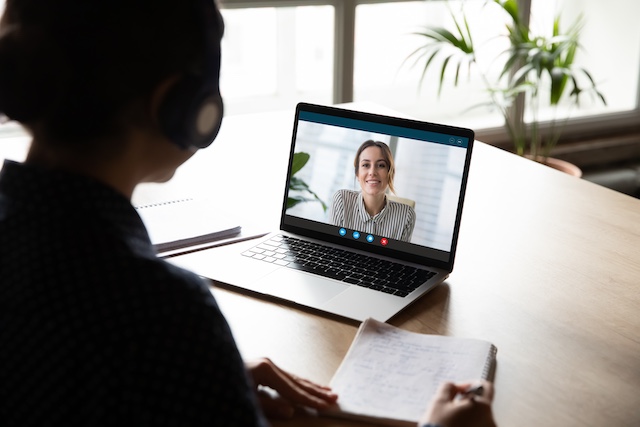What once began as a flexible work trend has now evolved into a critical component of modern workforce strategy: hiring remote employees.
Organizations across various industries are embracing remote talent to unlock new levels of agility, cost efficiency, and access to specialized skills. By expanding their hiring efforts beyond geographic borders, companies can tap into a truly global talent pool, reduce overhead expenses associated with physical offices, and foster more diverse and inclusive teams.
This shift is particularly beneficial for startups seeking to scale efficiently, enterprises looking for niche expertise, and companies aiming to offer flexible work environments that attract top talent.
This article examines the advantages of hiring remote employees, the types of roles well-suited for remote work, and best practices for recruiting, selecting, and onboarding remote talent. By following a structured process, organizations can ensure that their remote hires are well-equipped for long-term success and growth.
Why Is Hiring Remote Employees So Important?
The importance of hiring remote employees stems from a fundamental change in approach to workplace culture and business strategy. What began as a temporary response to the pandemic has become a permanent fixture in the global workforce.
This shift does more than offer flexibility, it also delivers tangible business benefits such as:
- Access to global talent: Remote hiring eliminates geographic limitations, opening the door to specialized skills from around the world.
- Reduced overhead costs: Rethinking office space and relocation budgets can provide substantial savings.
- Greater diversity: Remote hiring enables a broader range of skills and experience offered through representation across regions, cultures, and life stages.
- Enhanced retention and productivity: Remote-friendly organizations often see improved employee satisfaction, with many choosing flexibility as a career-long priority.
While remote hiring offers significant advantages, it also brings unique challenges. From navigating a workday that spans multiple time zones to adhering to international employment laws to ensuring consistent communication, companies must be prepared.
A well-structured process for recruiting, evaluating, and onboarding remote talent is crucial for maintaining compliance, productivity, and team cohesion. Without it, organizations risk legal missteps, such as employee misclassification, and struggle to build a strong, inclusive remote culture.
To truly benefit from remote hiring, businesses must take a proactive approach: address legal and operational complexities early, establish clear guidelines, and create a remote-friendly environment where global employees feel connected, supported, and aligned with company values.
5 Steps to Successfully Hire Remote Employees
Here’s how to make remote recruitment a core part of your business model:
1. Define the role with clarity and intention
Successful remote hiring starts with a job description that clearly outlines the role’s core responsibilities, required skills, and expectations specific to remote work.
- Be specific about remote logistics: Include time zone preferences, expected work hours, and communication expectations.
- Emphasize soft skills for remote success: Highlight traits like self-discipline, autonomy, time management, and comfort with asynchronous collaboration tools (e.g., Slack, Trello, Zoom).
- Set clear performance metrics: Define how success will be measured using KPIs, deliverables, or timelines so candidates understand how they’ll be evaluated from day one.
2. Source candidates from the right channels
Finding remote-ready talent requires a targeted approach. Traditional job boards may not yield the best candidates for distributed teams.
- Utilize remote-focused platforms: Post jobs on sites like We Work Remotely, Remote OK, or FlexJobs, which cater specifically to remote professionals.
- Tap into global talent networks: Global platforms like LinkedIn, Toptal, or Upwork give you access to vetted professionals from around the world.
- Leverage internal referrals: Encourage team members, especially those already working remotely, to refer individuals who thrive in flexible, self-managed environments.
3. Assess skills, culture fit, and remote readiness
Virtual assessments must be thorough and tailored to the realities of remote work. Candidates should be evaluated not only for their technical ability, but also for their adaptability and communication skills.
- Conduct structured video interviews: Use live video calls to assess how clearly and confidently a candidate communicates. Take note of body language, energy, and presence.
- Use real-world tasks and simulations: Give candidates a practical assignment aligned with the job (e.g., a design task, coding challenge, or writing sample). Utilize time-limited exercises to simulate real-world work environments.
- Evaluate for remote aptitude: Ask about their remote experience, preferred tools, strategies for self-motivation, and how they stay focused without supervision.
4. Evaluate communication and self-management skills
Effective communication and the ability to work independently are non-negotiable for remote roles. These skills often determine whether a remote hire will succeed in the long term.
- Prioritize written and verbal clarity: Review how they write emails, respond to messages, and express ideas during interviews. Look for promptness, structure, and tone.
- Look for evidence of self-leadership: Ask behavioral questions that reveal how they prioritize tasks, manage their time, and handle deadlines.
- Verify through references: Speak with former managers or colleagues about how the candidate performed in past remote or hybrid roles. Ask about their reliability, responsiveness, and independence.
5. Design a structured and supportive onboarding experience
Remote employees often lack the benefits of hallway chats or desk-side support. A strong onboarding process is crucial to helping them feel integrated, informed, and empowered from the very beginning.
- Prepare ahead of time: Ship necessary equipment early and ensure access to email, internal systems, and collaboration tools before the start date.
- Create a human connection: Schedule virtual team introductions, 1:1s with direct teammates, and a welcome meeting with leadership to foster a sense of belonging.
- Set clear goals and feedback loops: Define early wins, assign mentors or onboarding buddies, and establish regular check-ins to monitor progress and provide guidance.
- Offer continuous development: Support remote employee growth through online training, internal workshops, mentorships, and ongoing feedback to help them advance in their roles and stay engaged.
Structured onboarding and mentorship programs provide new hires with a clear roadmap, ensuring they receive consistent guidance, regular check-ins, and targeted training sessions. This approach accelerates their integration into the team, building confidence and competence, regardless of their physical location.
Remote mentoring should also utilize digital tools, such as video conferencing and collaboration platforms, to bridge distances and foster meaningful connections between mentors and mentees. Regular, intentional communication helps new employees feel supported and included, while peer-to-peer mentoring and quick micro-mentoring sessions can offer additional layers of guidance and community.
By prioritizing mentorship and continuous learning, organizations empower remote employees to take ownership of their development, expand their professional networks, and contribute more effectively to team goals.
Conclusion
Hiring remote employees can unlock incredible potential for innovation and growth, but only with the proper process in place. When you recruit intentionally and onboard thoughtfully, you empower your team to thrive from anywhere.
INTOO can support your remote hires through our range of employee development programming, including coaching, training programs, and workshops. Contact us today to discover how we can support your new hires in integrating and thriving within your team for long-term success.












